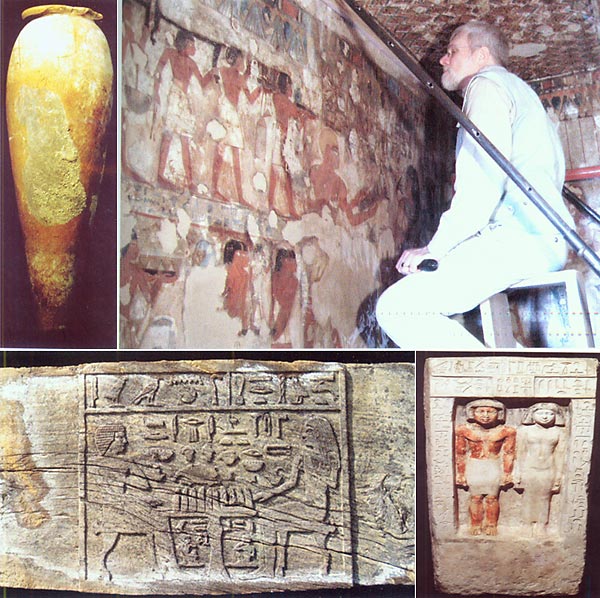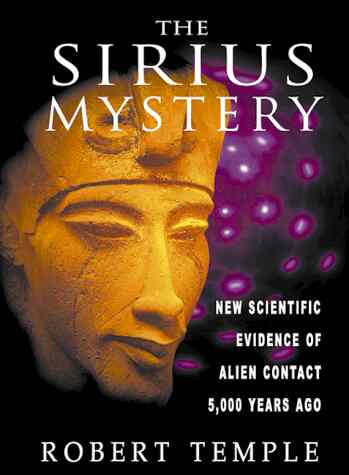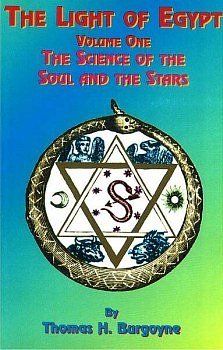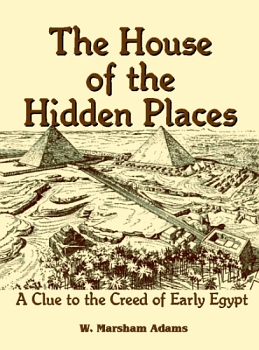Together in the spirit of ancient Egypt
Friday, February 22 2008 @ 09:31 AM CST Views: 327

Nevine El-Aref celebrates the Australians' 25th anniversary in Egyptology
Over the past year the Egyptian Museum in Tahrir Square has hosted several archaeological exhibitions commemorating the anniversaries of excavation work carried out by foreign archaeological institutes and missions all over Egypt and highlighting their contribution to preserving the national archaeological heritage.
Among these were the German, Polish, French and American institutes in Egypt. The most recent exhibition was inaugurated early last week to celebrate the 25th anniversary of the foundation of the Australian Institute in Egypt.
Entitled Corroborree, a name that refers to a traditional Aboriginal Australian gathering for the lively exchange of friendship and information, the exhibition contains 31 key objects carefully selected from Australian excavations at Saqqara, Helwan, Luxor and Dakhla Oasis.
Among the most significant objects put on display for the first time, is a collection of glass bottles, jugs and jewellery unearthed during excavations at the Ismant Al-Kharab site in Dakhla Oasis.
Ismant Al-Kharab is the site of ancient Kellis, a Roman village comprising the well-preserved remains of residential, religious and administrative buildings that were occupied from the late Ptolemaic period to the fourth century AD. The earliest structure found so far is the main temple of god Tutu, which was converted into a small church in the early fourth century. The early residential areas were to the north and northeast of the village, a fact indicating that the village was developed in a ribbon pattern rather than clustered around the temple.
Other excavations at the site revealed that members of the pagan elite were mummified and buried in mud-brick mausoleums to the north and south of the village, while the less wealthy were buried in rock-cut tombs in the nearby plateau to the northwest. By the late third century, however, burial practices seem to have changed as a large cemetery containing 4,000 pit graves was found at the northeastern part of the village.
According to Egyptologist Gillian Bowen, the painted gladiator jug on show at the exhibition is one of the most spectacular pieces of the Late Roman period glassware ever found in Egypt. It is decorated in enamel technique with two scenes of combatant gladiators, one being encouraged to fight harder by a figure clad in a toga and wielding a stick. The gladiators can be identified as a retiarius (net thrower) and contra-retiarius by the equipment they use and their garments.
"These are shown in such detail that there can be no doubt that the painter of the vessel had either seen gladiatorial combat or was producing such items from pattern books as mementos for those who attended the games," Bowen suggested.
She asserted that, to date, there is only evidence for the performance of such combats in Alexandria, where a gladiatorial training school is known to have existed. "Therefore, we can assume that the jug was manufactured in the capital. But the circumstances surrounding its arrival at Kellis, 1,000km distant, can only be the subject of speculation," she said.
A bottle shaped like a child's head is another distinguished piece of glassware. Mould-made in two sections and joined together, the body of the bottle features a child's face with short curly hair, possibly a representation of either the Greek deity Dionysus, the god of wine, agriculture, and fertility of nature, or Eros the god of love and sexual desire.
Three golden rings inlaid with precious stones are also on display. The first is a double ring inset with clear blue glass, the second with carnelian stone engraved with a detailed representation of a female head, and the third with a green stone engraved with a male head.
Wine clay jars, bone labels, limestone seals and stelae from the Helwan necropolis are also exhibited. Helwan was the main necropolis of Egypt's capital, Memphis, and reflects the social classification of Egyptian society at the time when the Egyptian state was in the process of formation. The site was previously excavated during the 1940s and 1950s by Egyptologist Zaki Saad, who uncovered more than 10,000 tombs. In 1997, an Australian mission headed by Christian Köhler re-excavated the previously discovered tombs and stumbled upon almost 6,000 objects and more than 150 new graves dating from between the First and Fourth dynasties.
Köhler said that this re-excavation project aimed at excavating the tombs according to modern technology and scientific standards in an attempt to answer specific archaeological queries, such as the spatial distribution of tombs in the cemetery, the precise context, quantity and quality of grant goods, their exact chronology and typological development.
"This will contribute to the better understanding of the burial customs and social structure of this period as well as identifying the economy and bio-archaeology of Memphis early inhabitants, their human remains, subsistence, health, pathology, diet and nutrition," Köhler said.
A cylinder grey steatite seal from Abydos engraved with the word serekh, the name of the god Horus used prior to the First Dynasty, is a significant object from Helwan as it suggests that the inhabitants of proto-dynastic Memphis had administrative relations with the early rulers of Abydos. Such seals were used to keep the mud placed over knots of string or vessel necks in order to prevent any tampering of the contents.
A bone commodity label from Helwan is another interesting artefact on display, as it bears unusual inscription to the effect that it was once attached to a container filled with Setji oil that may have been inventoried under an official, whose name is also listed, during the year when the Maat bark festival was celebrated. "It is more usual to find royal names on commodity lists and not officials as is found on this label," Köhler said.
Several objects from the burial site of King Teti at Saqqara are exhibited, and include a series of inscribed door wooden panels, gold and carnelian tassels, gold and lapis lazuli pendants and limestone stelae. The limestone statue of the king's acquaintance Meri and his wife Bebyt is of great interest, as Meri represented his wife of equal size to himself without observing the usual height difference between males and females. It is noticeable that as the Sixth Dynasty progressed, wives were more often shown on a smaller scale.
A well-preserved and beautifully-decorated anthropoid wooden coffin of an unidentified male, with the mummy still inside, is another object of art from Teti's cemetery and was found in the vicinity of two other coffins. It is decorated and inscribed with funerary formulae in white paint on a dark background, while the mummy is heavily wrapped and then covered with a beaded overlay showing the facial features of the deceased wearing a collar, a winged scarab, the sky goddess and the four sons of Horus. The overlay was wrapped with bands to keep it in place.
Egyptologist Naguib Kanawati said it was interesting that, in another of the three coffins, the artist unusually tried to imitate the beaded work with his paint brush. "The three coffins may belong to members of the same family," he suggested.
Kanawati described the exhibition as a celebration underlining the Australian involvement in the uncovering and study of one of the greatest civilisations of humankind, that of ancient Egypt. "In a relatively short period, Australian archaeologists have made a significant contribution to Egyptological researches through excavation, documentation and restoration work," he said.
According to the exhibition's brochure, this anniversary not only allows a pause to reflect on the work carried out and achieved by Australian missions in the field of Egyptology and to highlight their collaboration with their Egyptian counterparts, but it also pays homage to those Australians who prior to the 1980s paved the ground for Australian archeological missions. One of these was Sir Charles Nicholson, founder and later chancellor of the University of Sydney, who travelled through Egypt in 1856 and 1867 collecting ancient Egyptian artefacts which he later donated to the University's Nicholson Museum. This collection formed the basis of the first public display of ancient Egyptian antiquities in Australia.
The Australian ambassador to Egypt, Robert Bowker, described the exhibition as an important cultural event highlighting the multi-dimensional nature of the bilateral relations between Egypt and Australia. "A relationship that is not only based on strong trade ties, especially in agricultural products, but on long-standing friendships and mutual understanding as well."

Clockwise from top left: wine jar with Serekh detail; epigraphic recording and conservation in Theben tomb; statue of Meri and his wife Bebyt; a wooden door panel (photos courtesy of the Australian mission)
© Copyright Al-Ahram Weekly. All rights reserved
http://weekly.ahram.org.eg

http://hiddenmysteries.com/xcart/product.php?productid=18071

http://hiddenmysteries.com/xcart/product.php?productid=18616

http://hiddenmysteries.com/xcart/product.php?productid=18165

http://hiddenmysteries.com/xcart/product.php?productid=18701

http://hiddenmysteries.com/xcart/product.php?productid=18389

http://hiddenmysteries.com/xcart/product.php?productid=18631

http://hiddenmysteries.com/xcart/product.php?productid=18565








What's Related